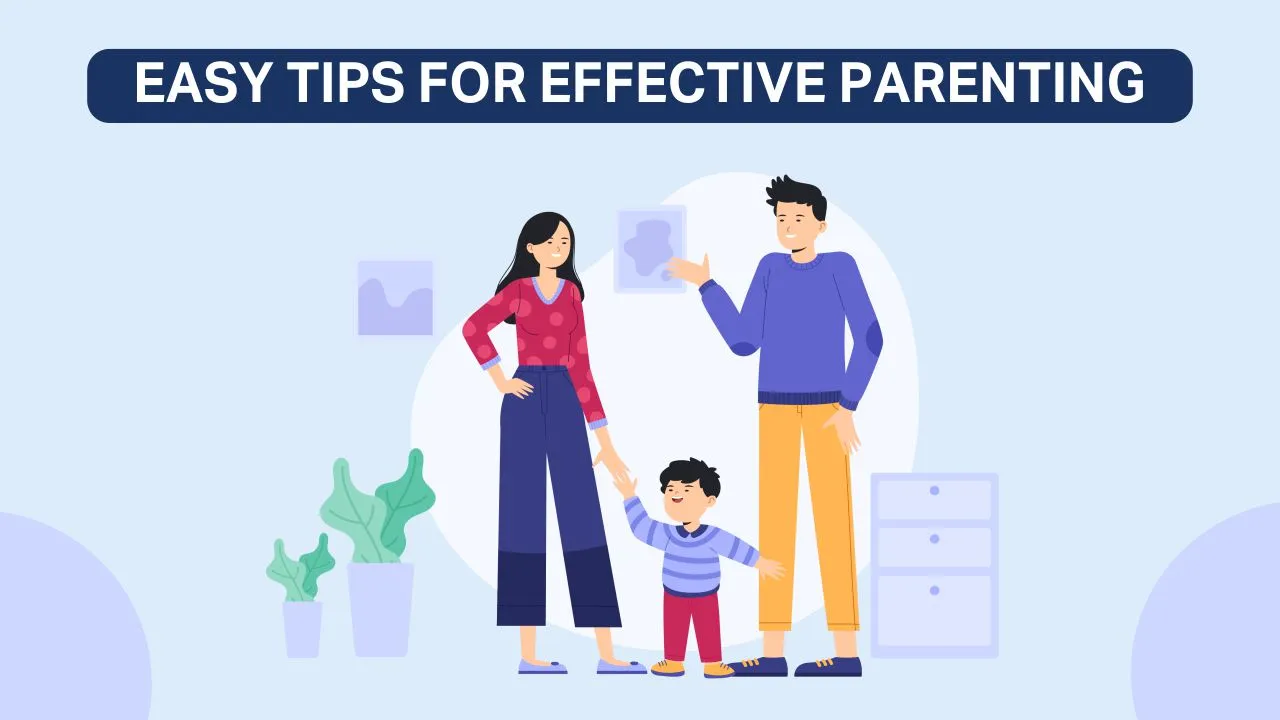As it is, today we live in a digital world where screen, big or small is a permanent feature of our lives. Setting healthy screen time limits and establishing digital boundaries is essential for a child’s well-being and development. Here are some guidelines to help you establish a healthy balance:
- Set Clear Expectations: Clearly communicate your expectations regarding screen time and digital device usage. Establish specific guidelines, such as the duration and timing of screen time, and communicate them consistently.
- Lead by Example: Be a positive role model by practicing healthy screen habits yourself. Limit your own screen time, especially during family time, and demonstrate the importance of engaging in other activities.
- Establish Screen-Free Zones and Times: Designate specific areas in your home, such as bedrooms or mealtime areas, as screen-free zones. Similarly, establish dedicated screen-free times, such as during meals or before bedtime, to encourage face-to-face interactions and promote healthy sleep habits.
- Create a Family Media Plan: Collaboratively develop a family media plan that outlines guidelines for screen time usage. Involve your child in the decision-making process and discuss the importance of balancing screen time with other activities.
- Use Parental Control Tools: Utilize parental control features available on devices and apps to monitor and limit your child’s screen time. Set age-appropriate filters and restrictions to ensure their online safety.
- Encourage Physical Activity and Outdoor Play: Promote physical activity and outdoor play as alternatives to screen time. Engage your child in sports, hobbies, or outdoor adventures to keep them active and minimize sedentary screen time.
- Engage in Interactive and Educational Screen Time: Encourage your child to engage in screen activities that are educational, interactive, and promote skill development. Encourage them to explore educational apps, online courses, or creative platforms that stimulate learning and creativity.
- Monitor Content and Online Safety: Be vigilant about the content your child consumes online. Regularly review and discuss their online activities, ensuring they are accessing age-appropriate and safe content. Teach them about online safety, including privacy settings, responsible behavior, and avoiding cyberbullying.
- Establish Tech-Free Bedtime Routine: Create a tech-free bedtime routine to promote healthy sleep habits. Set a specific time at night when all screens are turned off, allowing your child to unwind and prepare for quality sleep.
- Encourage Offline Activities and Social Interactions: Foster a range of offline activities that promote social interactions, creativity, and hands-on learning. Encourage hobbies, reading, art, music, outdoor play, and spending time with friends and family.
- Engage in Digital Activities Together: Make screen time a shared and interactive experience. Engage with your child in digital activities, such as playing educational games, watching movies together, or exploring educational content online. This allows for bonding and facilitates conversations about responsible digital behavior.
- Regularly Communicate and Reassess: Maintain open lines of communication with your child about their digital experiences. Discuss the benefits and risks of technology, address any concerns, and regularly reassess the screen time guidelines as your child grows and their needs change.
Teaching Digital Literacy and Responsible Online Behavior
Teaching digital literacy and responsible online behavior is crucial in today’s digital age. Here are some strategies to help guide your child:
- Start Early: Introduce digital literacy and responsible online behavior from an early age. Teach your child about basic concepts such as online privacy, digital footprint, and appropriate online conduct.
- Educate on Online Safety: Teach your child about online safety measures, including the importance of strong passwords, recognizing and avoiding scams or suspicious links, and reporting inappropriate content or cyberbullying.
- Emphasize Critical Thinking: Encourage critical thinking skills when consuming online content. Teach your child to evaluate the credibility of information, question sources, and distinguish between reliable and unreliable sources.
- Promote Digital Footprint Awareness: Help your child understand the concept of a digital footprint and the potential long-term consequences of their online actions. Teach them to think before they post or share anything online and consider the impact on their reputation.
- Teach Responsible Social Media Usage: Guide your child on responsible social media usage. Discuss the importance of respecting others’ privacy, being mindful of what they share, and the potential impact of their online interactions.
- Discuss Cyberbullying and Online Etiquette: Teach your child about the harmful effects of cyberbullying and the importance of treating others with kindness and respect online. Encourage them to be empathetic and supportive towards others.
- Encourage Privacy Settings and Personal Information Protection: Teach your child to protect their personal information online. Show them how to set privacy settings on social media platforms, avoid sharing sensitive information, and be cautious when interacting with strangers.
- Discuss Online Reputation Management: Help your child understand that their online activities can shape their reputation. Encourage them to curate a positive online presence by sharing thoughtful and constructive content.
- Promote Digital Citizenship: Teach your child about their role as responsible digital citizens. Discuss concepts such as online ethics, copyright infringement, and the importance of respecting intellectual property.
- Foster Open Communication: Establish an environment of open communication where your child feels comfortable discussing their online experiences, concerns, or any uncomfortable situations they may encounter. heroes parents guide Encourage them to approach you for guidance or support.
- Monitor Online Activities: Regularly monitor your child’s online activities, particularly for younger children. Keep an eye on their browsing habits, social media usage, and the apps they download. Use parental control features to establish boundaries and ensure their online safety.
- Model Responsible Online Behavior: Be a positive role model for responsible online behavior. Practice what you preach by demonstrating good digital habits, respectful online interactions, and responsible information sharing.
Addressing Cyberbullying and Online Safety
Addressing cyberbullying and online safety is of utmost importance in protecting your child’s well-being in the digital world. Here are some steps you can take:
- Open Communication: Maintain open and honest communication with your child about their online activities. Encourage them to share any concerns or experiences they may have encountered. Establish trust so that they feel comfortable approaching you for support.
- Educate about Cyberbullying: Teach your child what cyberbullying is and explain the different forms it can take, such as harassment, spreading rumors, or sharing inappropriate content. Help them understand that cyberbullying is unacceptable and can have serious consequences.
- Recognize Warning Signs: Educate yourself and your child about the warning signs of cyberbullying. This includes sudden changes in behavior, withdrawal from social activities, changes in academic performance, or reluctance to use digital devices. Encourage your child to confide in you if they experience any of these signs.
- Set Privacy Settings: Show your child how to properly set privacy settings on their social media accounts and other online platforms. Ensure they understand the importance of restricting access to their personal information and sharing content only with trusted individuals.
- Teach Digital Citizenship: Instill in your child the values of digital citizenship, which include respect, kindness, and empathy. Help them understand the impact of their online actions on others and encourage responsible online behavior.
- Establish Rules and Boundaries: Set clear rules and boundaries regarding your child’s online activities. Discuss appropriate time limits for screen usage, which platforms or websites are allowed, and the importance of reporting any instances of cyberbullying.
- Encourage Self-Reflection: Teach your child to think critically about their own online behavior and the impact it can have on others. Encourage them to consider the consequences before posting or sharing anything online.
- Promote Empathy and Kindness: Teach your child the importance of treating others with empathy and kindness both online and offline. Encourage them to stand up against cyberbullying and support those who may be targeted.
- Monitor Online Activities: Regularly monitor your child’s online activities, especially for younger children. Stay informed about the platforms they use, the friends they connect with, and the content they consume. Consider using parental control software to help maintain a safe online environment.
- Report and Block: Teach your child how to report and block individuals who engage in cyberbullying. Show them how to use the reporting features available on different social media platforms and encourage them to seek help from trusted adults or school authorities.
- Supportive Resources: Familiarize yourself with resources available to address cyberbullying, such as helplines, counseling services, and support groups. hillbilly elegy movie parents guide Share these resources with your child and let them know that there are people who can help if they experience cyberbullying.
- Collaborate with Schools and Communities: Work with your child’s school and local community to promote online safety and raise awareness about cyberbullying. Advocate for educational programs and policies that address cyberbullying effectively.
Promoting Critical Thinking and Media Discernment Skills
Promoting critical thinking and media discernment skills is essential in helping your child navigate the vast amount of information they encounter in today’s media-rich world. Here are some strategies to help develop these skills:
- Teach Information Evaluation: Teach your child to critically evaluate information they come across online or in media. Encourage them to question the source, consider the author’s credibility and expertise, and look for evidence or supporting sources earth to echo parents guid.
- Discuss Bias and Perspective: Help your child understand that media sources may have biases and different perspectives. Teach them to recognize and analyze bias in media content, encouraging them to seek out diverse viewpoints to develop a well-rounded understanding.
- Analyze Media Messages: Help your child deconstruct media messages by asking questions such as “What is the main purpose of this message?”, “Who is the intended audience?”, and “What techniques or strategies are used to influence the audience?” This helps them become more aware of persuasive techniques and hidden agendas.
- Encourage Fact-Checking: Teach your child the importance of fact-checking before accepting information as true. Introduce them to reputable fact-checking websites or tools and encourage them to verify information independently skyscraper parent guide.
- Explore Multiple Sources: Encourage your child to seek information from a variety of sources before forming an opinion or drawing conclusions. Discuss the importance of considering different perspectives and cross-referencing information to develop a more comprehensive understanding.
- Media Literacy Education: Look for media literacy programs or resources that provide age-appropriate activities and lessons to enhance critical thinking and media discernment skills. These programs often focus on topics like media bias, advertising techniques, and digital citizenship.
- Engage in Media Discussions: Engage your child in discussions about media content they consume. Encourage them to share their opinions, ask questions, and express their thoughts on media messages, advertisements, or news stories. This helps develop their analytical and critical thinking skills.
- Encourage Independent Research: Encourage your child to dig deeper into topics of interest by conducting independent research. Guide them in identifying reliable sources, evaluating the credibility of information, and synthesizing findings to form their own informed opinions.
- Media Consumption Guidelines: Establish guidelines for media consumption, such as limiting screen time, discussing media choices as a family, and promoting a healthy balance between entertainment and educational content. ali parents guide Encourage your child to make conscious choices about the media they consume.
- Be a Critical Media Consumer: Model critical thinking skills by discussing your own media consumption habits and sharing how you evaluate information and media messages. Show your child that questioning and critical analysis are essential skills in today’s media landscape.
- Encourage Media Creation: Encourage your child to create their own media content, such as writing articles, producing videos, or designing websites. This hands-on experience helps them understand the process behind media creation and enhances their ability to critically analyze media messages.
Stay Engaged and Supportive: Stay engaged in your child’s media experiences, offering guidance and support along the way. Be open to discussing challenging topics and encourage them to seek your assistance when encountering confusing or misleading information.


